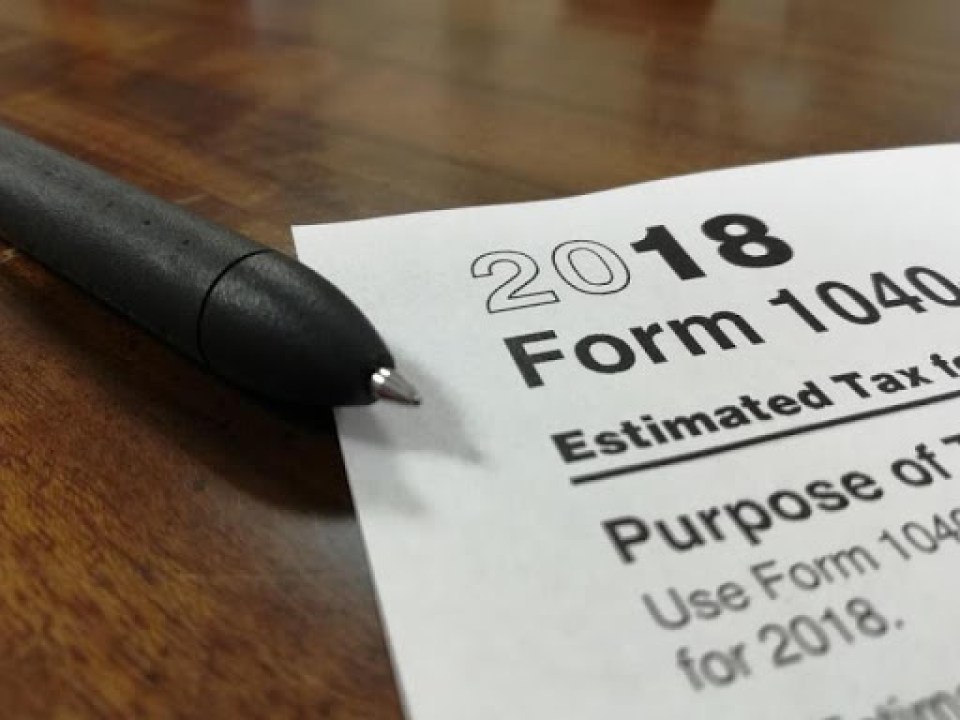10 Common Mistakes On Your Tax Return (And How to Avoid Them)
Filing a tax return is a long and grueling process that can expose anyone to numerous errors. Missing a key detail in the form will often lead to delays and stress.
As a taxpayer, it is your duty to avoid the common mistakes on your tax return.
- Taxpayer Name Errors
It’s basic – everyone must know how to spell his or her name correctly. While this seems easy, many taxpayers have troubles jotting down their names.
Before sending your tax return form, always double-check everything – starting with your name. After that, check out the names of your dependents. One inconsistent detail can lead to a bottleneck on processing your return, and this can even bring in some hefty penalties.
- Social Security Number Errors
Out of the many possible basic mistakes on your tax return, a social security number error is the most important to avoid.You need to check and double-check your social security number, as well as the numbers of your dependents.
To avoid continuous social security number errors, just input the number in a secured journal. Don’t forget to include your dependents’ social security numbers so that you won’t go back and forth.
- Lack of Signature on Return Form

After inputting every single detail, you need to authenticate the form by signing it. Without your signature, everything is null and void. This can hold up your tax return for a few days or weeks.
To make matters worse, the IRS might add penalty fees for your blunder. If you’re signing the form with your spouse, you’d have a lower chance of committing this error because both signatures are needed.
- Wrong Bank Account Number
While other mistakes on your tax return are related to details, a bank account error is more likely concerned with refunds. Basically, if the bank account number is wrong, your refund cannot be processed.
So, double-check your bank account number. This way, you can avoid frustrations and long delays over a simple error.
- Wrong & Inconsistent Computations
In filing your tax return, you need to know and understand most tax formulas. If your computations are wrong, they will trigger a red flag on the IRS database. And when this happens, you might receive a warning letter from IRS!
Computing your returns shouldn’t be too difficult with the assistance of a tax accountant. The accountant will scan your tax returns, recalculate items, and come up of the final output. Don’t burn the midnight oil for tax computations – let the accountant handle that for you!
- Failure to Claim Tax Credit Eligibility
Tax credits are considered some of the best items in taxation because they can lower your tax expenses on a dollar basis. Unfortunately, this tax blessing is also one of the easiest to overlook. If you don’t check for tax credit eligibility, you’ll miss a taxpayer advantage.
Has your income decreased last year and you didn’t qualify for a tax credit? In that case, you’re eligible for the tax credit in the current year. And if you have above-the-line deductions, your income might be reduced enough to qualify for specific tax credits.
To determine your tax credit eligibility, you should coordinate with a tax accountant. The accountant will check if you have the proper requirements for eligibility.
- Missing Specific Tax Write-Offs
Commonly, missing tax write-offs is the result of fear. You might think that a specific deduction will trigger a red flag from the IRS. This is not the case, as long as you meet the given requirements.
One common write-off that taxpayers miss is the home office deduction. As a business owner, it’s wise to take the home office deduction because it can lower your expenses for the coming years. Just keep in mind that employees can no longer deduct home office expenses. Only self-employed individuals and business owners can file for the home office deduction.
It’s also important to know about the write-offs that you’re entitled to. As one of the simplest mistakes on your tax return, a write-off error can be fixed with proper research. If you have businesses outside the country, for example, you can possibly include some write-offs that can ease your tax burden.
To save time in determining write-offs, you can hire a tax accountant before you submit the tax return.
- Dependent Eligibility Errors
Before you include dependents on your tax return, you have to ensure that all dependents meet the requirements. If the dependents are not eligible and they are included in the tax return, their claims are invalid.
Requirements for qualifying child
- Child must be your son, daughter, stepchild, foster child, sister, brother, half-brother, half-sister, stepbrother, stepsister, or a direct descendant.
- The child must be under 19 and younger than you and your spouse.
- If the child is totally disabled, they’re eligible at any age.
- The child must have lived under your premises for more than half a year.
- If the child can’t provide more than half of their own support, they are eligible.
- The qualifying child mustn’t file a joint return with a spouse unless they’re filing to claim withheld income tax refund.
Requirements for qualifying relative
- The person can’t be your qualifying child or the child of another taxpayer.
- The person must be related to you and must have lived with you all year round.
- If the gross income of the qualifying relative is less than $4,150, he or she is eligible.
- You must provide more than half of the person’s support all year.
- Missing the Deadline & Extension Date
Perhaps one of the mistakes on your tax return is the fact that you missed the tax deadline. But don’t lose all hope – you can still file an extension which will give you a chance to finish your tax return until October 15.
Just remember that you still need to pay your taxes on April 15 – even if you managed to secure an extension. Otherwise, you will end up paying a late payment penalty fee. It’s always better to file your return on time and pay whatever you can.
What if you still miss the extended deadline? The answer is simple: trouble. You have no choice but to pay huge penalty fees. Plus, the IRS might even be suspicious of your activities.
- Failure to State Your Refund Preference
Once you realized that you’ve overpaid your taxes, you need to take action immediately. That is, if you want to get your refund faster. Still, if you prefer not to do anything, you will receive a check.
Just indicate your bank account and routing number on the specific form. This will help the IRA in determining how you want to get your refund.
Being proactive in your refunds will yield long-term advantages, especially during tight financial crises. More importantly, IRS representatives will appreciate your effort to become a responsible taxpayer and citizen.
What You Can Do If You Received An IRS Letter?

Almost everyone in the US dreads a letter from the IRS. And why wouldn’t they be? The IRS is strict in its campaign against tax evaders and fraudsters.
But you should know that an IRS letter isn’t necessarily a bad thing. You probably received the letter because of some adjustments and other tax changes.
So, don’t panic – you just need to follow these methods:
Check the Letter’s Authenticity
Scammers will always find different methods of preying on unsuspected people. In the past years, many taxpayers have received bogus snail mails from scammers who pretend that they’re connected with IRS.
Spotting a fake IRS letter can be tricky, but here are some telltale signs:
- Intimidating message demanding payment
- Threats of incarceration
- Lack of transparency about the ‘amount’ that you owe
- Sneaky payment method (i.e. debit card)
- Sender requires sensitive information
Keep in mind that the IRS won’t send you a letter through email, social media, and other digital platforms. You will get the letter straight from your mailbox.
Know The Reason
Upon receiving the authentic IRS letter, you should read it as soon as you can. An IRS letter doesn’t automatically translate to an unsettled tax amount.
These are the common reasons why IRS has sent you a letter:
- Pending tax balance
- A refund notice (your refund is probably larger or smaller than your expectations)
- Questions about your tax return
- Additional information needed
- Identity verification
- Tax return corrections
- Potential delays and other notifications
Once you’re fully aware of the reason, you can now plan your next move. For your personal reference, keep track of the reason why the IRS sent you a letter. Through the reason alone, you can assess the improvements necessary to ensure that your business won’t have debilitating tax issues anymore.
Also, if you have an outstanding tax balance, don’t neglect it. Prioritize your tax payments so that you can avoid frustrating penalties which have the tendency to grow higher over time.
It’s also important that you assert yourself as a taxpayer. Challenge the authority of the IRS whenever something feels amiss with the letter.
Strategize With A Trusted Accountant
While it’s possible to handle the IRS situation on your own, it’s even better to strategize with an accountant that you trust. A tax accountant has a deeper perspective when it comes to taxation and other related matters.
By strategizing with a tax accountant, you’d be able to handle the mistakes on your tax return effectively. Plus, you can even rely on the accountant’s expertise for a long period of time. According to many expert insights, small businesses supported by an accountant will have a better tax situation in a year or less.
But how can you find the best accountant who can help you avoid common mistakes on your tax return? Simple – you just need to make a list of the qualities that you’re looking for in an accountant. Some of the qualities, to begin with, are professionalism, transparency, accountability, organizational skills, and communication skills.
The result is even better if you can communicate with a respected accounting firm. Just relay your tax issues to the firm and an accountant will be ready to help you.
Respond As Soon As Possible
In most cases, you don’t need to respond to IRS – unless you want to challenge the letter or there’s a specific issue with your tax return.
Once you’ve decided to contact the IRS, prepare your tax documents and receipts. As the IRS representative reviews your account, he or she will probably ask you many important questions. Try to answer the questions clearly and concisely.
Patience is needed after sending your letter to IRS. With the number of taxpayers sending inquiries at any given instance, it may take up to 30 days before you get a response. And once IRS has responded, make sure that you get all details clearly.
If more issues persist, then perhaps you need the support of the Taxpayer Advocate Service. This is an independent body under IRS focused on helping taxpayers regarding their tax problems. The Taxpayer Advocate Service will clarify any tax issue and help you settle all tax payments in a seamless way.
One of the best things about the Taxpayer Advocate Service is the Low Income Taxpayer Clinic (LITC) Program. Under this program, qualified organizations can have a grant of up to $100,000 per year. From there, the organizations will represent low income taxpayers regarding their tax issues. Additionally, the LITC Program aims to spread tax awareness.
LITC’s services are affordable for eligible taxpayers. In some cases, taxpayers can even avail the service for free. If you want to be part of the LITC Program, you can learn more about it in the Taxpayer Advocate Service website.
Conclusion
Any mistakes on your tax return shouldn’t be taken lightly. Once you make a mistake, be mindful about it so that you won’t repeat it.
And if you’re having doubts about your recent tax return, be ready to dial the number of a reliable accountant. Contact us today and we’ll direct you to one of our skilled accountants!

